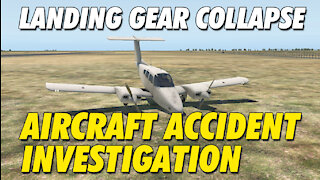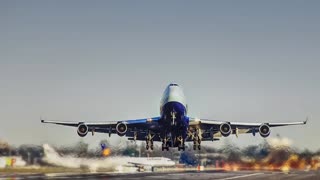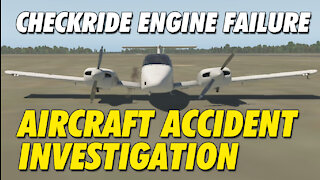Air Crash Investigation: Gulf Air 072
An Airbus A320 operated by Gulfair was preparing for its scheduled passenger's flight to the Kingdom of Bahrain. The total occupants on board were 143. Among them were 2 pilots, 6 cabin crew, and 135 passengers.
The flight took off roll from Cairo at 16:52 and the en-route part of the flight was uneventful.
At 19:21 the plane was over Saudi Arabia when it was descending through 14,000ft and was about 30 nautical miles northwest of Bahrain Airport.
Dammam Approach controller approved 3 things:
1. Self navigation for runway one two
2.Descend to Three point five or 3,500 feet.
3. Contact to Bahrain Approach on one two seven eight five.
The crew then contacted to Bahrain Approach.
Then the Bahrain Approach instructed to continue descent to 1,500 feet and report when established on the VOR/DME for Runway 12.
At 19:25:159 the aircraft was 9nm from Runway 12, flying at an altitude of 1873 feet with its speed of 313 knots.
The captain instructed the first officer to inform ATC that they are established.
Approach controller cleared the flight for the approach to Runway 12 and instructed the crew to contact Bahrain Tower.
Air traffic controller then cleared the flight to land and reported wind as 090 degrees at eight knots.
When the aircraft was 5.2 nm from the runway, it was flying at an altitude 1678 feet AGL with an airspeed of 224 knots.
The Captain disengaged the autopilot and flight director.
As the flight continued on its approach, the captain stated that they're not going to make it because of excessive height.
At 19:27 Instead of following the correct missed approach procedure, the captain instructed the first officer to request for 360 degrees left orbit. This was approved by Bahrain Tower.
When the aircraft was 0.9 nm from the runway, 584 feet AGL, the left turn was initiated. During the turn, the flaps configuration changed from flaps
“two” to flaps full.
The aircraft crossed the extended runway centerline at an angle of 90°
Then again it began to turn left ,followed by changes consistent with an increase thrust.
Air traffic controller asked the crew if they would need radar vectors for final,which was accepted by co-pilot.
ATC instructed them to fly heading three zero zero and climb to two thousand five hundred feet which was acknowledged by the first officer.
The captain's side stick started to move forward. This changed the aircraft's pitch attitude from 5 degrees nose-up to 15.5 degrees nose-down.
There was no movement from the first officer’s side stick.
The plane impacted the shallow sea with the pitch attitude and airspeed of 6 degrees nose-down and 282 knots respectively.
The aircraft was destroyed by impact forces, and all 143 persons on board perished.
The investigation was done by Ministry of Transport, Bahrain. According to the investigators, The Captain did not follow the standard operating procedures and the first officer did not draw the attention of the captain to the deviations of the aircraft from the standard flight parameters.
They mentioned that spatial disorientation and non-effective response by the flight crew to the ground proximity warnings caused this accident.
The lack of CRM training,organisational and management issues within the airline were the systemic factors which also contributed to the accident.
-
 5:00
5:00
AshleyWincer
3 years agoAircraft Crashes Off the Runway and Landing Gear Collapse | Aircraft Accident Investigation | BE76
80 -
 0:37
0:37
WORLD SOCIAL
5 years agoplane crash from air disasters
64 -
 1:37
1:37
vincent98
2 years ago $0.01 earnedairplane crash
1353 -
 8:56
8:56
AshleyWincer
3 years agoCheckride Engine Failure | Air Crash Investigation | BE76 Duchess
336 -
 0:13
0:13
Fourthestate
4 years agoPair Survive As Plane Crash-Lands In Gran Canaria Ocean
26 -
 2:07
2:07
The Black History Channel
1 year ago1969 Nigerian Air Force Jet Crashes Near Porto Novo, Dahomey (Republic Of Benin) #nigeria #benin
18 -
 0:23
0:23
24ghante
7 months agoFlight crash.
10 -
 10:03
10:03
Control Alt History
6 months agoThe deadliest plane crash in US military history is a MASSIVE mystery | The Gander crash
54 -
 6:03
6:03
robduby76
1 year agoUPS Flight 1354 Crash in Birmingham Alabama
71 -
 12:41
12:41
The History Guy: History Deserves to be Remembered
3 years agoThe accident on Aloha Airlines Flight 243
1.09K3